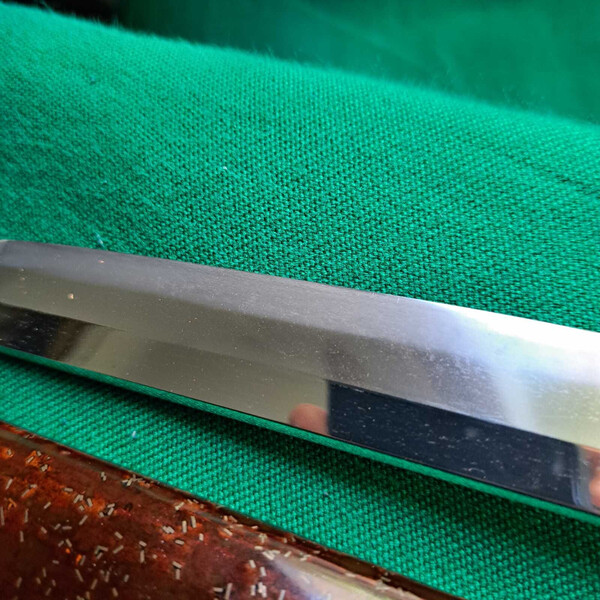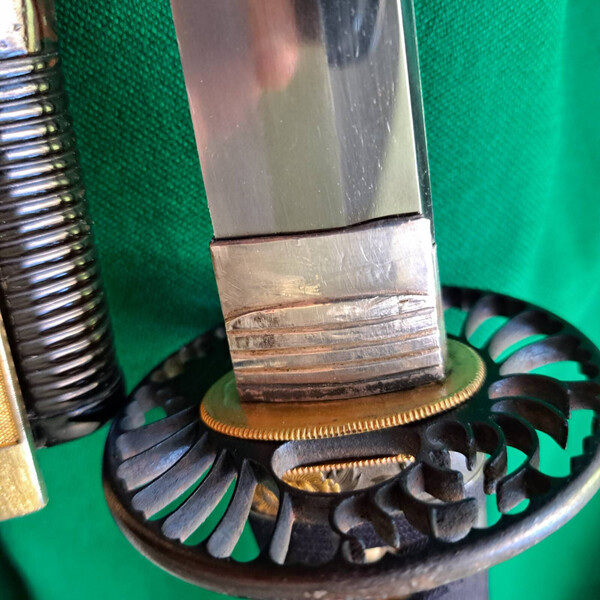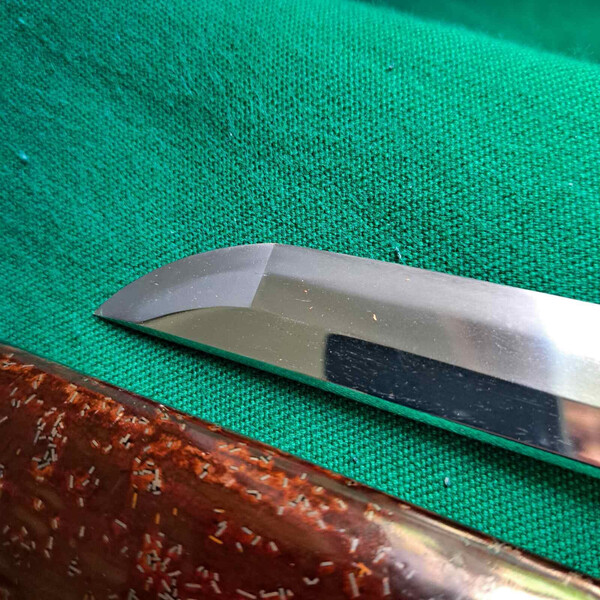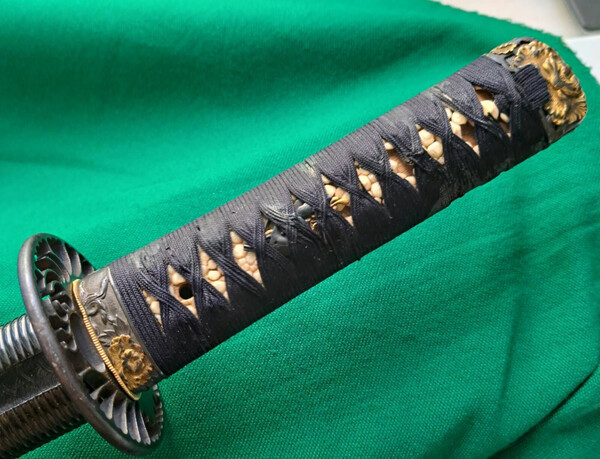-
Posts
127 -
Joined
-
Last visited
-
Days Won
1
Nazar last won the day on November 13
Nazar had the most liked content!
Contact Methods
-
Website URL
https://www.gazzz-garage.com/
Profile Information
-
Gender
Male
-
Location:
Ukraine
-
Interests
Motorcycles, Great War belt buckles, Kappenabzeichen, some blades.
Profile Fields
-
Name
Nazar
Recent Profile Visitors
The recent visitors block is disabled and is not being shown to other users.
Nazar's Achievements
-
Bruce, here is another one from the same site: https://richard-militaria.at/Japan-marine-katana-fuer-offiziere-shin-gunto
-
-
-
Yet one souvenir sword: https://richard-militaria.at/Japan-shin-gunto-katana-fuer-marine-offiziere
-
Here is another one: https://richard-militaria.at/kaiserlich-japanisches-armee-katana-shin-gunto-fuer-offiziere
-
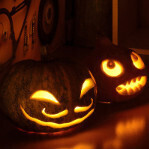
Another wakizashi for evaluation
Nazar replied to Nazar's topic in General Nihonto Related Discussion
Lewis, If take into account the story with fake origami papers, I wouldn't be surprised if the last two "kanji" were chiseled in Ukraine. Alex, Thank you. That is exactly my plan: stay calm and wait for opportunity. Yet, thanks to the people from this very board, things like this are quite educational. They also make me wonder if there is a limit when it comes to forgery, fakes and assemblies. -

Another wakizashi for evaluation
Nazar replied to Nazar's topic in General Nihonto Related Discussion
Marcin, many thanks to you! As soon as I read your message (the part about the background), I remembered that I already have seen this particular background too. Only on the local internet auction. Then things clicked into place in my mind. Some time ago I called some guy from Kyiv who put an ad about selling Japanese dress sword and navy dirk (dirk fittings had mismatched parts). It turned out that the dress sword was already sold but he told me that he could bring another one as his daughter lives in Japan. We had some conversation, and some of the things he mentioned made me think about the "shady seller" who offered me this very wakizashi and that previous one with fake origami papers. So I became curious and mentioned wakizashi with fake papers and at this point I noticed the change in his tone and then he quickly became "busy" and finished the call. Now I checked some current lots of this person and they have the very same green fabric for the background. So the "shady seller" and the "person with a daughter in Japan" are clearly connected. Now I know the source of Japanese blades and I believe the scheme is simple and as old as humanity: buy the cheap thing, then sell it as luxury. If you have some links to lots of that yahoo seller, it would be interesting to take a look at them. -

Another wakizashi for evaluation
Nazar replied to Nazar's topic in General Nihonto Related Discussion
Jean, I completely agree with you. And that mei looks to be a big red light by itself. Yet I was curious about the thing, so I created the topic. So to say, for educational purposes. Thank you Kirill, I wonder if that was crude attempt to make it look like the blade has something to do with Echizen Kanenori. JM, Alas, I am living in a country where Japanese blades tend to be overpriced. Like I regularly see prices of 3K USD for showato. Never have seen them actually sold though -

Another wakizashi for evaluation
Nazar replied to Nazar's topic in General Nihonto Related Discussion
These are the only available pictures. I processed the photo of mei to make it more visible and to position it in an appropriate way. What I was able to make from first four kanji is: "越前国住". Yet I am not sure if I am right or wrong. -

Another wakizashi for evaluation
Nazar replied to Nazar's topic in General Nihonto Related Discussion
-
The same seller that offered me previous gimei wakizashi popped again with a new offer. It's another wakizashi. The thing that makes me dubious from the starter is mei. It looks like two last "kanji" were added by an inept person. Yet I am interested in your opinion on this wakizashi. Also it's an evaluation of the seller. I already formed my opinion on his being some shady personality with dubious lots for sale.
-

Shin Gunto Japanese Sword - real?
Nazar replied to Susana Ferreira's topic in Military Swords of Japan
Encountered similar fake on our local auction too: https://violity.com/ua/120509033-yaponskij-vijskovij-kortik-do-1945r?utm_source=follow&utm_medium=yaponskij-vijskovij-kortik-do-1945r&utm_campaign=17 999uah -

Need your expertise on wakizashi.
Nazar replied to Nazar's topic in General Nihonto Related Discussion
Thank you Geraint! Shame on me for ctrl+c ctrl+v -

Need your expertise on wakizashi.
Nazar replied to Nazar's topic in General Nihonto Related Discussion
Thank you, Ed. If you read through my first post, you may find that before I created the topic I already knew the papers were fake. As you said, fortunately there are resources online today, so I did exactly as you said. I studied and figured out on my own that: First, the papers don't match the actual mei on nakago. Second, the round stamped seal shouldn't be on green papers. And third, papers were tampered locally in Ukraine. After this I disregarded papers, but I still was interested in this wakizashi, papers or no papers.I figured out that the mei is Bitch no Kami Tachibana Yasuhiro and (thanks to this very Board) managed to find that there were four generation of swordsmiths that signed swords in this way. Yet, as the papers turned out to be a scam, I had to find out if the mei was genuine. Exactly at this stage I asked for expertise on the sword. Thanks to Jacques, he confirmed my fears that this wakizashi is gimei. So I believe I did my homework before I bothered you. -

Need your expertise on wakizashi.
Nazar replied to Nazar's topic in General Nihonto Related Discussion
Thank you, Jaques! Alas for the sword, I liked it. Chris, thank you for the great story. Marcin, as I said, I liked this wakizashi. So if it was not gimei I'd consider buying it even with no papers (with some negotiations on price, sure). Thank you, John! Thank you for the information! Yes, I figured out that photos were replaced by some local persons. Will not buy this sword. This whole story may be sad for the seller, but I believe he will worm his way out with this wakizashi. For me it was very educational, so thanks once more to all who participated in this topic!






